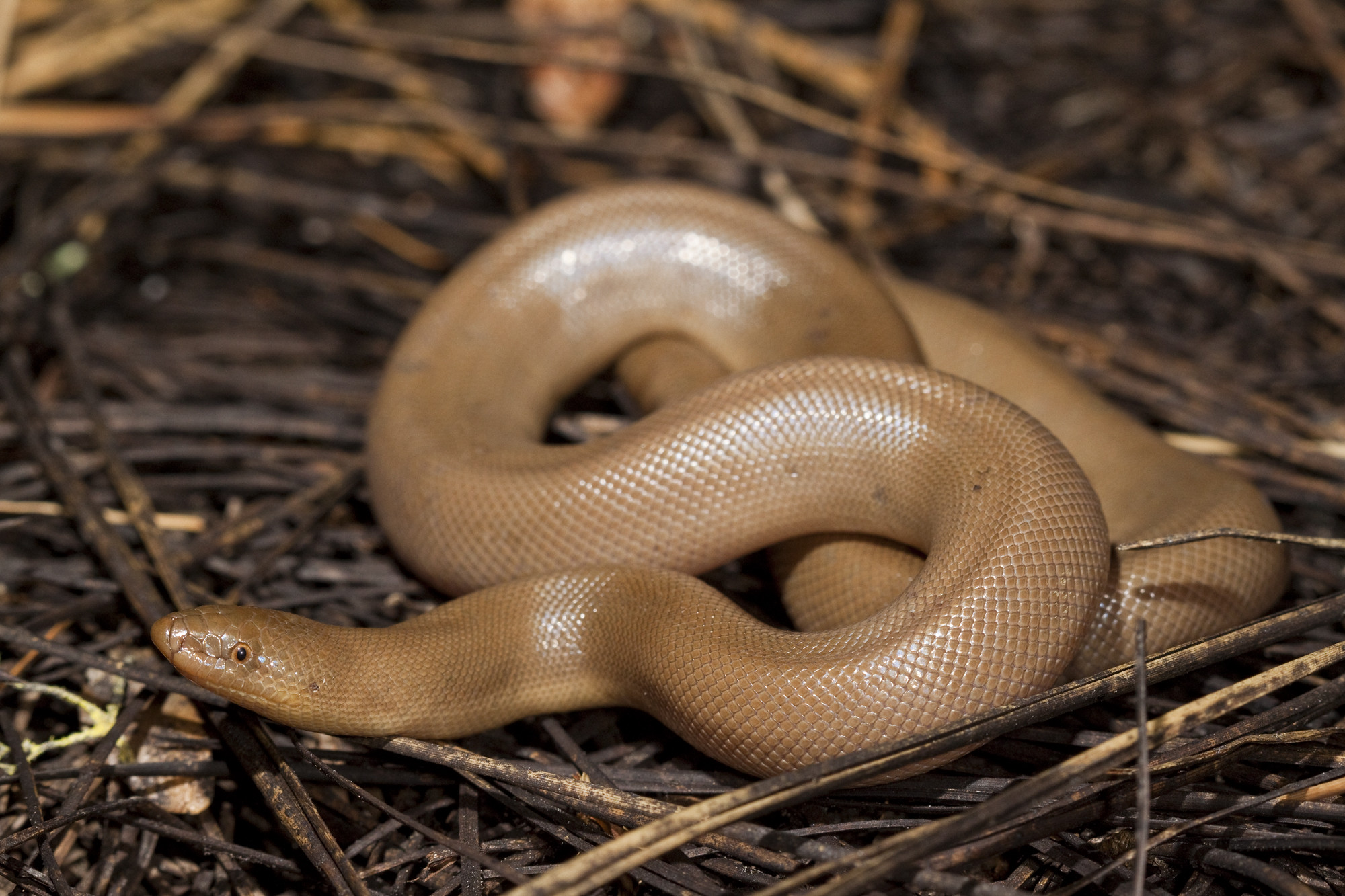In Our Backyard: Rubber Boa

A Quiet Resident Beneath Our Feet
Hidden under rocks, logs, and forest litter, the rubber boa or Northern rubber boa (Charina bottae) is one of the most secretive reptiles in the Thompson–Nicola region — and one of only a handful of snake species native to British Columbia. Though rarely encountered, its presence tells a powerful story about ecosystem health, habitat connectivity, and the quiet resilience of grassland–forest transition zones.
What to Look For
The rubber boa is small and smooth-bodied, typically under 70 cm long, with a blunt, rounded tail that looks surprisingly like its head — a natural decoy that confuses predators. Its soft, rubbery skin gives the species its name. In the Thompson–Nicola, individuals are usually olive-brown or greyish above with a yellowish belly, blending perfectly with forest duff and dry grassland soils. They’re often found near rock outcrops, talus slopes, coarse woody debris, and rodent burrows — the kinds of microhabitats that hold moisture and provide shelter from temperature extremes and predators.
Why It Matters to Conservation
Though easily overlooked, the rubber boa plays a quiet but critical ecological role. By feeding on small mammals — particularly mice and voles — it helps regulate rodent populations and maintain ecological balance in grassland and open forest systems. For conservation practitioners, this snake is a bioindicator species: its presence signals healthy, connected habitat with intact cover, microclimate stability, and prey abundance. Because it’s slow to mature and reproduces infrequently, populations are highly sensitive to habitat loss and fragmentation — especially in valley-bottom ecosystems that are under the greatest development pressure.
In Canada, the species is listed as Special Concern under the federal Species at Risk Act (SARA), and provincially it’s Yellow-listed (S4) in B.C., a designation indicating it is apparently secure and not at risk of extinction.
Local Context: In the Thompson–Nicola
In the Thompson–Nicola region, the rubber boa occurs in valley and lower-slope ecosystems — often sharing habitat with other species at risk such as the Western rattlesnake, gopher snake, and Great Basin spadefoot. These overlapping ranges mean that conservation or restoration work benefiting one species often supports several others.
The shared need for unfragmented, low-elevation corridors links the fate of all these species. For example, maintaining coarse woody debris during fuel management projects, retaining rock outcrops during road maintenance, or designing wildlife-friendly culverts in dry grassland corridors can all improve conditions for the rubber boa and its ecological neighbours.
Threats
The rubber boa is affected by several cumulative pressures:
- Habitat Loss and Fragmentation: Urban expansion, road construction, and agricultural development continue to erode key habitats and movement corridors.
- Road Mortality: Even low-speed rural roads can cause significant losses to slow-moving snakes during seasonal migrations.
- Habitat Simplification: The removal of rocks, logs, and debris during land clearing or fuel mitigation reduces essential refugia and hibernation sites.
Conservation Considerations
For those working in restoration or land management, simple stewardship actions can make a difference:
- Retain logs, rocks, and debris piles in project areas whenever possible.
- Time heavy equipment work to avoid peak reptile activity (e.g., March–May and September–November) in known corridors.
- Incorporate reptile-friendly design in road and trail planning.
- Encourage reporting of sightings to iNaturalist or local conservation data centres to improve mapping and understanding of distribution.
If you’re a land manager, contractor, or conservation practitioner:
- Integrate reptile considerations into habitat prescriptions, particularly in the grassland–forest interface.
- Engage with local community members — traditional ecological knowledge and local observations can help locate key refugia and overwintering sites.
- Promote education and awareness — sharing the story of the rubber boa helps shift perceptions about snakes and supports broader conservation outcomes.
Learn More
- COSEWIC Assessment and Status Report: Rubber Boa
- BC Species and Ecosystems Explorer: Rubber Boa
- BC Reptiles and Amphibians: Northern Rubber Boa
Feature image: Northern Rubber Boa by Natalie McNear (CC by NC 2.O) via Flickr
